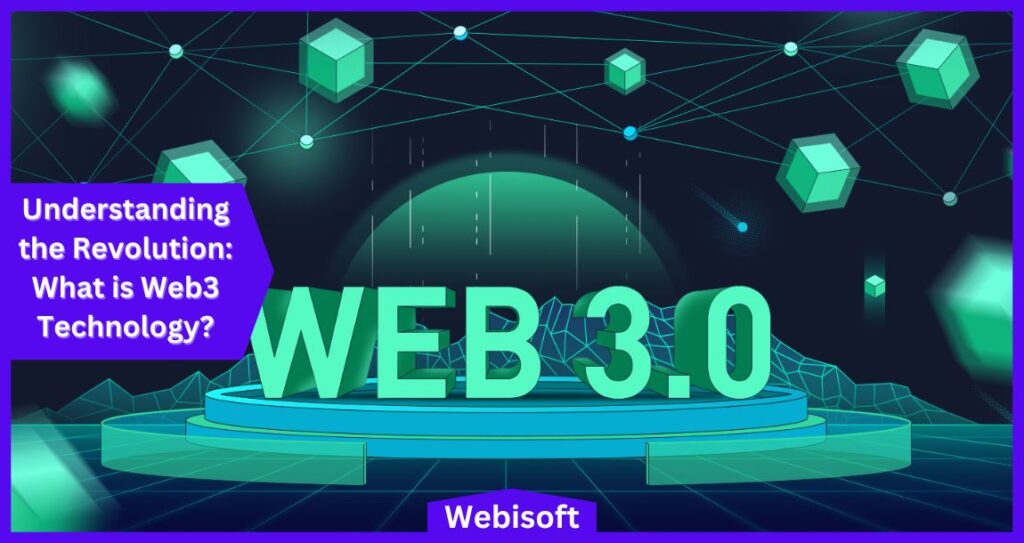As our digital landscape evolves, you might find yourself asking, “What is Web3 technology?” Well, you’re not alone. Welcome to the future of the internet, where technology isn’t just innovative – it’s transformative. Web3 technology is a step beyond what we know as the internet today.
It’s a decentralized version of our online world that puts power back into the hands of users, promoting autonomy, freedom, and true ownership.
The Web3 technology revolutionizes the way we trade, interact, and connect online, from gaming to digital marketplaces. Join us as we delve into this exciting new digital frontier.
Contents
- 1 A Web Worth Exploring: Navigating from Web1.0 to Web3.0
- 2 Exploring the New Internet: A Dive into Web3
- 3 Debunking the Web3 vs Web3.0 Technologies Debate
- 4 The Power of Web3: Putting the Keys Back in Your Hands
- 5 Unraveling Web3: The Main Attractions
- 6 The Complex Web of Web3: A Layered Look
- 7 A Deep Dive into the Web3 Tech Toolbox
- 8 The Magic of Web3 Storage: A Quick Guide
- 9 Diving into Web3’s Potential: Key Applications and Use Cases
- 10 How DAOs Shape the Web3 Landscape?
- 11 When Education Meets Web3
- 12 Finance Finds a New Home in Web3
- 13 Unlocking the Power of Decentralization: Web3 in Gaming
- 14 Wrapping Up
A Web Worth Exploring: Navigating from Web1.0 to Web3.0
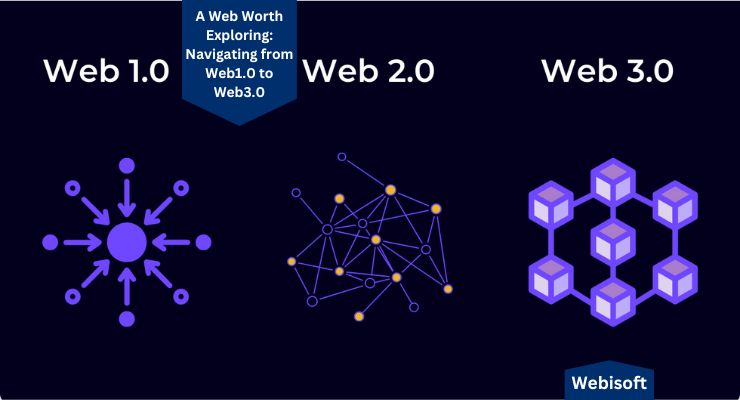
In our digitally dominated world, control has often been sequestered in the iron grip of a few major tech behemoths. These entities have wielded their authority over the expansive digital landscape we call the internet. But a new force has emerged, poised to disrupt this paradigm. Enter Web3, the champion of digital democratization.
It’s a common belief that the internet, a constant companion in our day-to-day lives, has always been as it is. However, it has undergone a transformative journey. To appreciate this evolution, let’s embark on a whistle-stop tour from Web1.0 to the present day’s Web3.0.
The Dawn of the Digital Age: Web1.0
In 1989, a luminary in the world of computer science, Tim Berners-Lee, presented us with a gift: Web1.0. It was the birth of the World Wide Web, a simplistic yet groundbreaking version.
Labelled the ‘read-only’ web, Web1.0 was a treasure trove of static, informational content connected by digital threads known as hyperlinks. This pioneer version of the internet served us until 2004.
The People’s Web: Web2.0
As we moved into the new millennium, the internet underwent a significant facelift. In 2004, Web2.0 emerged, commandeering the digital throne. Dubbed the ‘read-write’ web, it bestowed upon users the power to create content and interact across various platforms.
From mobile apps to e-commerce, Web2.0 unlocked a multitude of opportunities and democratized the content creation process.
The Semantic Web: Web3.0
Web3.0, often referred to as the Semantic Web, is an ambitious extension of the internet, designed to infuse the web with machine-readability.
It aspires to connect all internet data at a fundamental level, so changes made on one platform echo across the digital sphere. For instance, if you update your job status on LinkedIn, that change will reverberate across other platforms, like Facebook.
Now that we’ve traced the web’s evolution, let’s turn our attention to the compelling, revolutionary force of Web3. Shaking off the shackles of centralized control, Web3 seeks to evenly distribute power to every user of the internet, instead of a select group of tech titans.
This piece will journey through the intricate details of Web3, presenting its offerings in the most comprehensive and engaging way. Stay tuned to discover how Web3 is reshaping our internet experience, transforming it from a tool of the few to a resource for the many.
Exploring the New Internet: A Dive into Web3

Welcome to the future of the internet as we know it – Web3! Picture the internet in an upgraded, decentralized format, a departure from the controlled and conventional web you’ve grown accustomed to.
This futuristic platform is Web3, and it’s reinventing the online world. Web3, in essence, is an internet revolution characterized by decentralization and distribution.
It draws its power from blockchain, an advanced technology that is at the heart of this transformation. This set-up ensures the user is at the helm of their data, giving them complete control and ownership.
Imagine an internet where your data isn’t under the thumb of an overseeing authority – that’s what Web3 is all about. Multiple blockchain nodes scattered across the network serve as custodians of your data, reinforcing the system’s transparency.
Birth of Web3: A Leap from Web2.0
The concept of Web3 was the brainchild of Gavin Wood, one of the founders of Ethereum, back in 2014. Aiming to shift the balance of data ownership from the corporations of Web2.0 to the user, Wood introduced this forward-thinking concept.
His vision was to give back control to users over their data via self-governed identities and decentralized storage in a user-oriented environment.
The Role of Cryptocurrency Wallets
Web3’s promises would have remained only a pipe dream if not for digital wallets like Venly, MetaMask, and TrustWallet. These crypto wallets are the secure havens where users keep their confidential data and identities under lock and key.
They allow seamless interaction with other blockchain applications while retaining control over who gets access to their data.
The Allure of Decentralized Applications
Under the Web3 paradigm, developers get the freedom to construct and launch applications that run on multiple servers, devoid of any central authority dictating terms. The applications also use shared and open databases for data storage.
Now, with a good grasp of what Web3 is, let’s move on to drawing a contrast between Web3 and Web3.0 in the following section.
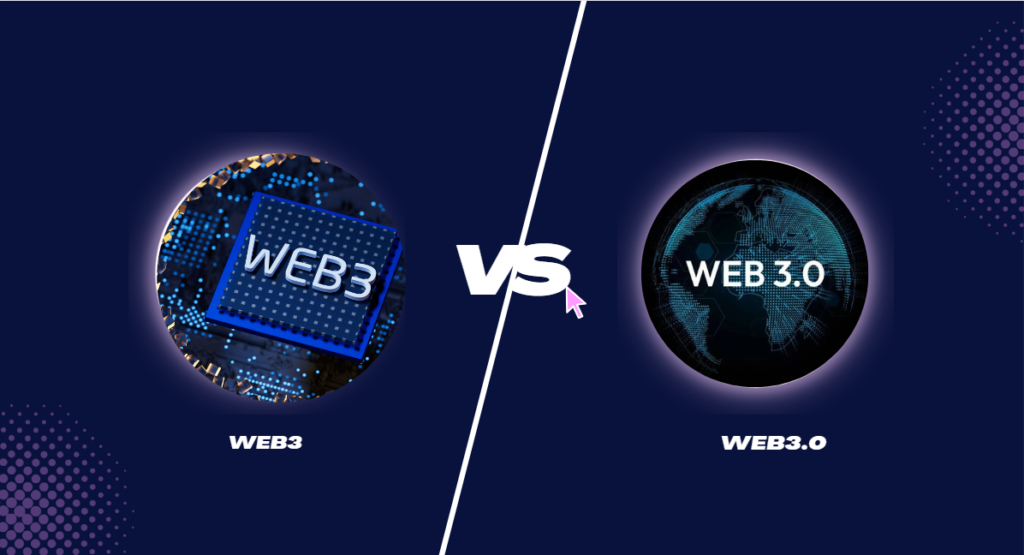
Debunking the Web3 vs Web3.0 Technologies Debate
When it comes to navigating the third generation of the internet, a popular misconception can easily lead folks astray. You see, there’s this notion that Web3 and Web 3.0 are two peas in a pod, when in fact, they’re as different as apples and oranges.
Web 3.0 is all about a ‘connected’ or ‘semantic’ web, inspired by the vision of Tim Berners-Lee. On the flip side, Web3 embodies a decentralized and blockchain-supported internet.
Let’s dive into their key differences, displayed in a handy table for ease of understanding:
| What’s The Difference? | Web3 | Web3.0 |
| Who’s in Control? | Web3 is all about empowering the individual, by returning data control and identity to the rightful owners. | Web3.0, the semantic web, prioritizes efficiency and intelligence by linking and reusing data across various sites. |
| How’s Data Stored? | With Web3, your data is securely tucked away in a crypto wallet, accessible only with your private keys. | For Web3.0, your data rests in a central location known as a ‘pod’, which lets you manage third-party access. |
| What’s Under the Hood? | Web3 harnesses technologies like blockchain, digital wallets, smart contracts, and decentralized browsers. | Web3.0 employs data interchange tech such as OWL, RDF, SPARQL, and SKOS. |
| Can Data Be Modified? | It’s tough to meddle with data in Web3, as it’s spread out across numerous nodes. | With Web3.0, data is more vulnerable to manipulation, deletion, or alteration. |
| Who Can Access Data? | The treasure trove of asset data in Web3 can only be unlocked with private keys stored in crypto wallets. | Web3.0’s centralized data storage means it’s under authority control and can be accessed by anyone on the web. |
With these clear distinctions between Web3 and Web3.0, it becomes easier to comprehend their individual contributions to technological advancement and the ongoing decentralization movement.
Stay tuned as we delve deeper into these intriguing aspects of the modern internet!
The Power of Web3: Putting the Keys Back in Your Hands
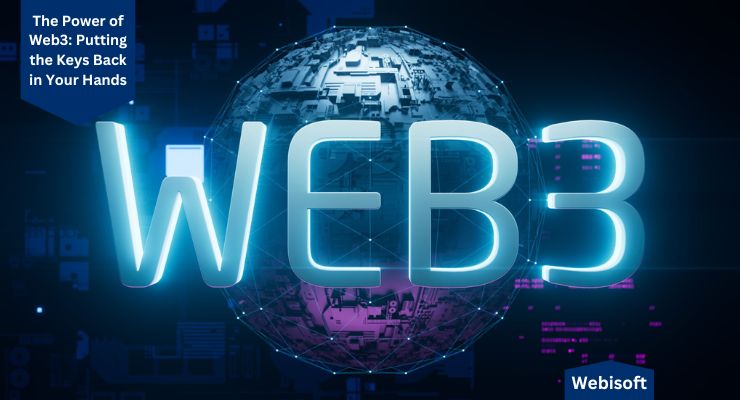
There’s a growing movement that’s reshaping the digital landscape, and its name is Web3. In a world where we’ve often felt pressured to hand over our personal data just to use the likes of Facebook or Google, Web3 brings a refreshing change.
It introduces a revolutionary era where you, the individual, get to call the shots and own your identity on the web. Sounds promising, right? Let’s delve deeper.
A Shift of Power: The Decentralized Technology
Web3 is flipping the script on the old way of doing things. It’s pioneering an approach where there’s no room for centralized middlemen.
Instead, it’s leveraging blockchain technology to serve as a trusty, transparent third party. What’s truly exciting is that it’s putting power back into the hands of everyday people like you and me.
But how does it do this, you ask? By simply eliminating those pesky intermediaries, and enabling you to regain control.
NFTs: Web3 Technologies
This revolution isn’t just theoretical; we’re seeing it in action with the rise of non-fungible tokens, or NFTs as they’re more commonly known.
Consider this – artists, writers, and creatives are starting to play around with alternative ways to receive the lion’s share of their work’s profits. It’s all thanks to the magic of smart contracts.
Smart contracts are pre-set agreements baked right into a blockchain. They spring into action and carry out the terms of the contract when specific conditions are met. Take NFTs, for example. Smart contracts enable secondary royalty systems, guaranteeing that artists get a slice of the pie each time their artwork changes hands in the marketplace.
This transformative shift in the value chain is creating a seismic change for creatives. The antiquated stereotype of the struggling artist is being disrupted. With the rise of Web3, creators are pocketing more profits than ever before.
That, my friend, is the power and significance of Web3. It’s reshaping the digital world as we know it, and there’s no better time than now to sit up and take notice.
Unraveling Web3: The Main Attractions
Curious about what makes Web3 so special? Let’s take a look at its standout features:
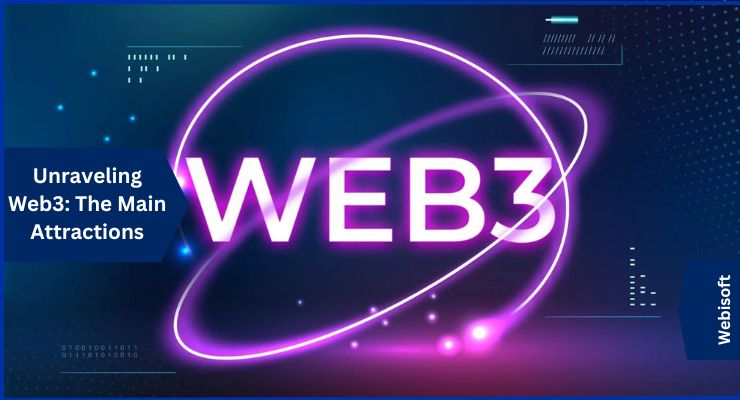
A New Era of Ownership
Imagine this – you’re engrossed in an online game, investing your time and money in in-game items. Suddenly, the developers pull the plug on your account. All those digital assets you’ve acquired?
Gone in an instant. Or suppose you quit the game. Again, all that investment is lost. Web3 flips this script with non-fungible tokens, better known as NFTs. These are your golden tickets to direct ownership in the digital realm.
With NFTs, not even the game creators can snatch away your digital goodies. Fancy leaving the game? No worries – sell or swap your in-game assets in the thriving open marketplaces and retrieve their worth.
Against Resistance
In the realm of Web3, your data rests securely on the blockchain. Decided to jump ship from one platform to another? You can bring your reputation along for the ride.
Unlike the old web, where creators had to rely on platforms to play fair, Web3 incorporates censorship resistance as a built-in feature. Now, that’s what we call a game-changer.
Collective Power
Web3 isn’t just about owning your data; it’s also about co-owning platforms. Welcome to the world of Decentralized Autonomous Organizations, or DAOs for short.
Tokens in these structures are akin to shares, empowering users with collective ownership and decision-making capabilities for the platform’s future.
DAOs rely on preset smart contracts, automating decentralized decision-making over a pool of resources (tokens). As a token holder, you get a say in how these resources are distributed, and the code seamlessly executes the vote’s outcome.
Keep in mind, though, while many Web3 communities adopt the DAO label, they all have varying levels of decentralization and automation.
The Digital Persona
The traditional internet required you to create separate accounts for each platform – say, Twitter, Facebook, and Reddit. Even minor changes like updating your display name or profile picture were cumbersome.
Worse yet, you had to trust these platforms with your personal information, and they could shut you out with a single click.
Web3 addresses these pain points by handing over control of your digital identity to you. A blockchain-based address ensures a reliable, censorship-resistant, and anonymous universal login across platforms.
Simplified Transactions
Web2’s banking system was all about financial gateways and banks, leaving those without bank accounts high and dry. Enter Web3’s native payments. With tokens like SOL or ETH, you can send money directly through the browser, doing away with the need for a third-party.
Now that we’ve skimmed the surface of Web3’s core features, let’s dive deeper into its unique architecture in our next segment.
The Complex Web of Web3: A Layered Look
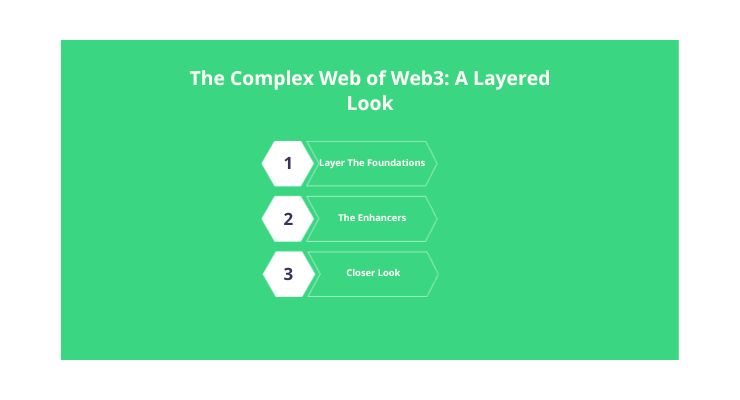
Web3, the latest evolution of the internet, is structured in a fascinating multi-layered system. Like a gourmet dessert or an intricate piece of music, it’s composed of distinct layers, each contributing something unique to the overall masterpiece.
Let’s unravel these layers together, shall we?
Layer One: The Foundations
Bedrock Basics
At the heart of Web3, we find the bedrock basics, which are the most elemental components of this dynamic network. This part incorporates a myriad of blockchain protocols, digital currencies, storage systems, and identity overseers.
This layer is akin to the ingredients of a cake, the fundamental elements needed to create something beautiful.
Sub-layers found here include:
- Blockchain blueprints
- Digital dough (cryptocurrencies)
- Decentralized storerooms
- Identity minders
Transaction Town
This sub-layer is all about action – transactions, to be precise. It’s where all the exchange operations occur, such as digital markets, custodians, transactions, and wallets. You could think of this as the mixing process in our cake analogy, where all the ingredients come together.
Here, we encounter:
- Digital currency bazaars
- Cryptocurrency keepers
- Payment portals
- Cryptocurrency safes
Layer Two: The Enhancers
Layer 1 Lifelines
Layer Two’s first sub-layer acts as a lifeline to the first layer, filling in any gaps that may have occurred. It comprises scalability solutions, interoperability, auditing systems, and platforms for monitoring and rating. In our cake analogy, this would be the baking process, ensuring our cake rises evenly without any cracks.
This includes:
- Sidechain scaler Polygon
- Blockchain builders like Alchemy
- Auditing platforms such as Certik.com and Scortik.com
- Parachain packagers for interoperability
- Blockchain babysitters like Duplicat.ai
Vital Vitamins
This sub-layer is like the icing on our cake, providing additional utilities and tools to make Web3 application integration smoother and more efficient. This is where the beauty and creativity of our cake come alive.
Inside, we find:
- User experience boosters for blockchain
- Open-source platforms for crafting secure, seamless dApps
- Innovative platforms that transform your creative writings into NFTs
- Voting tools for DAO governance
- Blockchain data crunchers
- Decentralized exchange booths
Service Station
Unlike the previous sub-layers, this one brings in a human touch, focusing on manual work over automated software development. It’s like the moment when you serve the cake to your guests, finally sharing your creation with the world.
Here, we encounter:
- Smart contract communities like Mattereum
- Digital currency trading platforms
- Cryptocurrencies for global fund transfers
- Platforms for managing digital treasures
- Institutional trading arenas promoting wide-scale cryptocurrency adoption
Now, isn’t it amazing to see how Web3 is structured, layer upon layer, each as essential as the next? It truly is a testament to the power of complex, interconnected systems working in harmony.
A Closer Look at Layer III
Let’s venture deeper into the intricate world of Web3 with Layer III, revealing a treasure trove of NFT markets, secure communication channels, and a whole new gaming universe.
Art and Ownership Intersect: The Rise of NFTs
Non-fungible tokens, fondly known as NFTs, are lighting up the blockchain universe like a dazzling meteor shower. As their popularity soars, a multitude of NFT marketplaces have sprouted up, providing:
- Intuitive gateways to craft your very own NFT marketplace
- Opportunities to stake NFTs using smart contracts
- Service vendors offering tailor-made marketplace solutions, the perfect fit for your NFT dreams
- Ready-to-roll NFT marketplaces, saving you the development grind
Reimagining Conversations: Secure Communication
Web3 is reshaping how we communicate online, leveraging secure messaging protocols that safeguard your chats from prying eyes. What’s in store at this level includes:
- Notifications mechanisms, ensuring you never miss out on important updates
- Open-source instant messaging networks, keeping your chats safe and secure
Game On: Web3-Enabled Gaming
Web3 is changing the game, quite literally, by introducing us to blockchain-powered gaming platforms. Here’s what’s on offer:
- Gaming platforms rooted in blockchain technology, opening up exciting new play possibilities
- Gaming platforms that utilize NFTs, further enhancing the gaming experience
A Deep Dive into the Web3 Tech Toolbox
Web3 is like an avant-garde artist, utilizing a unique set of tools and technologies that stand apart from the more traditional Web2 canvas.
At its core, Web3 embraces the power of decentralization, replacing databases and centralized systems with the sturdy foundation of blockchain. Now, let’s don our technophile hats and explore the intricacies of the Web3 tech toolbox layer by layer.
Level Zero: The Infrastructure Underbelly
Just like a skyscraper relies on its robust foundation, the rest of the Web3 tech stack leans on the Infrastructure Layer. This layer is where the underlying blockchain magic happens. Here’s what it includes:
- Mining as a service (MaaS): think of this as a gold mine for virtual currencies.
- Various blockchain networks hosting a range of decentralized applications.
- The creation of virtual resources like operating systems and storage. A little bit like the Matrix!
- A network of computers computing in harmony, embracing decentralization.
- Regulating nodes keeping an eye on the distribution of data.
- Digital tokens designed for trading, storing, and transferring virtual assets.
- A decentralized storage unit acting as a secure vault for data.
Level One: Deciphering the Protocols
The next layer is where we find the rules of the game – the protocols. This includes consensus techniques, virtual machines, and participation requirements. A little like the instructions for building a LEGO set, these dictate how things are done in the Web3 world:
The consensus algorithms: the very methods that maintain harmony and agreement within the network.
- Proof-of-Work: The original blockchain agreement system
- Proof-of-History: A new kid on the blockchain
- Delegated-Proof-of-Stake: The democratic model
- Proof-of-Elapsed-Time: The patience game
- Stellar Consensus Protocol: The cosmic approach
The sidechain concept
This unique method allows for the flow of tokens and other assets from one blockchain to another, similar to a bridge connecting two islands.
Developers have a lot of room to play here because they can create decentralized apps without interfering with the main chain. Sidechains are self-governing blockchain units with their own security. If one sidechain is compromised, only that particular sidechain is affected, not the others – it’s like having a failsafe.
Type of blockchain networks
These are divided into public, free-for-all networks and private, invite-only networks.
The Virtual Machine
This is like the security guard of the network, designed to run volatile programs from all network computers safely.
And there you have it! The Web3 tech toolbox in all its glory. So, next time you navigate the Web3 space, you’ll have a better understanding of the intricate technology supporting your journey.
Power Tools: Layer 2
Welcome to the utilities stage, a dynamic layer that adds multiple functionalities to the Web3 realm, which includes:
- Super secure multi-signature setups
- Oracles that bridge the physical and digital worlds
- Wallets for safeguarding your digital assets
- Smart contracts that automate your transactions
- Digital IDs that redefine online identity
- Distributed file storage for decentralizing data
The Service Station: Layer 3
Next up is the service layer, the backstage crew of the dApps world. This technological marvel holds everything you need to design, monitor, and maintain your dApps ecosystem.
The toolbox here includes data feeds, off-chain computation, governance tools, state channels, and side chains.
The Frontline Show: Layer 4
Finally, we arrive at the application layer, the front-end of the Web3 universe. This layer showcases an array of dApp browsers, application hostings, intuitive user interfaces, and a variety of dApps. It’s the part of the Web3 stack that you interact with daily.
The Magic of Web3 Storage: A Quick Guide
Picture a massive warehouse where everything you own has its own special place. You can access anything you want, anytime you want, and you’re the only one who has the key. Sounds fantastic, right? Well, that’s the concept behind Web3 storage.
Understanding the Power of Decentralization
Web3 storage flips the script on traditional storage methods by introducing the element of decentralization.
Rather than having all your data stowed away on a single, centralized server, Web3 operates on an interconnected web of computers (or ‘nodes’) dotted across the globe.
These nodes work together, communicating through decentralized applications, putting you firmly in the driver’s seat when it comes to your data.
Why Blockchain is a Game Changer
The star of the Web3 show is undoubtedly the blockchain. With its ability to store tiny bits of transaction data, the blockchain functions as the brain of the Web3 operation.
Though not designed to hold vast amounts of data, it’s technically possible to store data in these blocks, setting the stage for decentralized storage to take a bow.
Filecoin Storage Solution
To give you a tangible taste of Web3 storage, let’s take a sneak peek at Filecoin.
Created by Protocol Labs (who also gave birth to IPFS), Filecoin is like a digital library, storing files on a peer-to-peer network. But what makes it unique is its use of economic incentives.
In the Filecoin universe, if you store files, you’re rewarded for your efforts. These rewards come in the form of FIL units, Filecoin’s very own cryptocurrency.
Storage providers act as librarians, ensuring your files are kept safe and sound over time. And the best part? Prices and availability aren’t dictated by a single entity.
Everyone gets a chance to participate in the open market of data storage and retrieval, creating a fair and competitive environment. So, with Web3 storage and solutions like Filecoin, you’re not just storing your data; you’re owning it. And in the world of Web3, that’s the kind of power that truly matters.
Diving into Web3’s Potential: Key Applications and Use Cases
The possibilities with Web3 are vast and impressive, let’s delve into some of the exciting applications and scenarios!
The Metaverse
The Metaverse projects find a great ally in the Web3 universe, leveraging its networking abilities to amplify the autonomous user experience. Add to that the power of cutting-edge tech like IoT and AI, and the Metaverse becomes even more enticing, adding a touch of realism that’s hard to distinguish from reality.
Decentralized Apps
Say goodbye to centralized authority! Next-gen decentralized apps (dApps) harness the strength of blockchain, delivering a superior experience that’s both feature-rich and user-friendly. These dApps, covering a broad range from Metaverse to DeFi, NFT, and gaming, truly harness the power of decentralization and interoperability, making Web3 their perfect home.
Jump into the realm of Decentralized Apps with us at Webisoft. Our dApps unleash the true potential of decentralization and interoperability, whether they’re in the exhilarating Metaverse or Gaming sectors.
Decentralized Finance
Decentralized finance, or DeFi, reaps the numerous benefits that Web3 brings. Think of affordable transaction costs, lightning-fast payment processing, open-source access, and more transparent governance – it’s a financial revolution!
Play-to-Earn Games
Web3 gaming takes blockchain-based games to the next level with innovative play-to-earn, NFT, and play-to-own games. Thanks to technologies like blockchain, NFTs, and advanced gaming infrastructures, players can own, sell, and even create in-game assets for monetary rewards.
Protecting User Privacy
Blockchain has shown enormous potential in decentralizing the future. But the promise of “full transparency” may raise privacy concerns. Fear not, with cutting-edge concepts like zero-knowledge proof and advanced cryptography, Web3 guarantees an impeccable level of privacy.
Reinventing Social Media
Ready for a social media upgrade? Web3 is powering a new wave of social networks, focusing on content ownership for users rather than central institutions.
Imagine the likes of Facebook, Instagram, and Snapchat, but in a Web3 avatar. This new breed of apps promises anonymity through wallet addresses and private keys – a massive step forward.
Expanding NFT Possibilities
NFTs are not just about digital art. Within the Web3 ecosystem, they’re used for rewarding users, affirming digital ownership, and storing unchangeable information on the blockchain.
Exploring Virtual Land Ownership
With Web3, you can even own virtual real estate. Innovative projects are leveraging NFTs, virtual reality, and 3D technologies to authenticate ownership and transfer NFT-based properties, adding a whole new dimension to the real estate sector.
Revolutionizing Workplaces
Companies are turning their physical workplaces into 3D digital replicas using Web3 technologies.
Employees’ avatars can work in these digital spaces, engage with colleagues, and participate in fun activities, much like in physical offices.
As we can see, Web3 is revolutionizing how we work, play, and interact online. So, fasten your seatbelt for a thrilling ride into the Web3 universe!
How DAOs Shape the Web3 Landscape?
Imagine an organization where every move is in the open for everyone to see, a place where transparency is the rule rather than the exception. Welcome to the world of Decentralized Autonomous Organizations or DAOs in Web3!
Say Hello to Transparency
In the traditional business world, much of what goes on happens behind the scenes. In a DAO, the curtains are thrown wide open. Thanks to blockchain technology, every decision, every financial movement is on full display for all to scrutinize.
This not only minimizes the chance for foul play but also ensures that every promise made is a promise kept.
Smart Contracts: Promises that Keep Themselves
The secret sauce of DAOs (and other Web3 wonders like NFTs) is the smart contract. These digital agreements spring into action once certain conditions are met. So, a decision backed by enough votes is automatically carried out, thanks to a smart contract. In this way, DAOs maintain a level playing field, letting everyone, not just big players, have a say in shaping the future.
When Education Meets Web3
The winds of Web3 are blowing, and no industry can afford to stay in the eye of the storm. Even the world of education is getting ready for a shakeup.
Imagine a school where every report card, every medical record, and every piece of student data, is securely stored on the blockchain.
School Tokens and Beyond
In this new Web3-enabled education ecosystem, a school might mint its own tokens, creating a mini-economy involving students and teachers alike. This could give schools the financial freedom they crave, helping them move away from a reliance on government funds.
And it doesn’t stop there. Personal Learning Networks (PLNs) could evolve into DAOs, leading to global collaborations that steer education in bold new directions.
Finance Finds a New Home in Web3
Just like every other industry, finance too is setting foot in the Web3 world. And why wouldn’t it? The decentralized nature of Web3 payments offers anonymity and security. Plus, the global network of advanced computers supporting Web3 means that there’s always a backup plan.
Bye-bye Single Failure Points
The failure of one node doesn’t spell disaster for Web3. If one goes down, another one quickly steps in to take its place. This robustness, combined with the ease of deploying apps, opens up a whole new world of financial transactions.
No need to sign up for banking services or give corporations access to personal financial information. With Web3, money transfers are simplified, secure, and truly in your control.
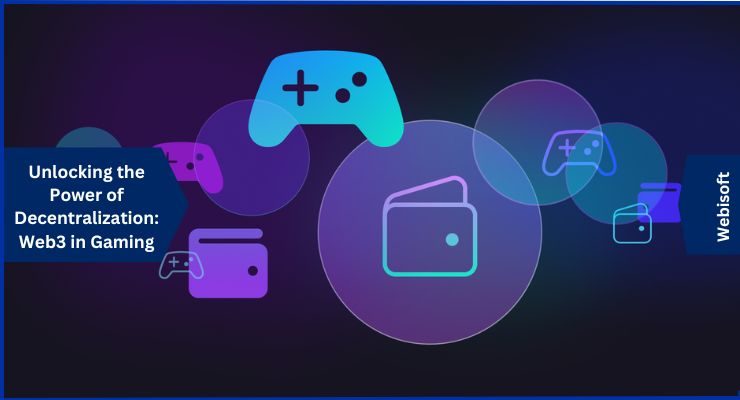
Unlocking the Power of Decentralization: Web3 in Gaming
Imagine a gaming world where players don’t just play but take charge. Welcome to the world of Web3 gaming, a realm where decentralization takes the front seat, transferring key powers such as ownership of gaming assets and decision-making from a central authority to players themselves.
Built by seamlessly integrating blockchain into the gaming landscape, Web3 games empower players. They get a say in the direction and progress of the game. Now, that’s gaming democracy in action!
But the excitement doesn’t stop there. Web3 gaming lays a lucrative foundation for gamers. Fancy trading assets?
Or maybe you’re attracted to game tokens you can trade? Perhaps earning in cryptocurrencies while enjoying your favorite game sounds tempting?
Web3 gaming makes all of these possibilities real.
Web3 gaming is more than just a gaming evolution; it’s a revolution for the industry. It creates virtual markets that are transparent and fair, where players can access and truly own unique digital assets. These in-game items are stored as gaming NFTs, adding a whole new layer of value and interaction for players.
So gear up, gamers! With Web3, you’re not just a player; you’re an integral part of the gaming universe!
Wrapping Up
So, as we reach the end of our journey exploring “What is Web3 technology,” it’s clear that the digital landscape is on the brink of a seismic shift. The Web3 paradigm is set to empower users like never before, fostering a more equitable, decentralized, and immersive online world.
With Web3 technology, we are reimagining the gaming sector, facilitating transparent financial transactions, and shaping a new generation of social networks. As we stand on the precipice of this transformative change, we can’t help but feel a sense of excitement for the limitless possibilities that await us in this new era of the internet.
Ready to step into the future with us? Let Webisoft empower your digital journey with our world-class decentralized applications.
Act now, because in the realm of Web3, the future is happening today. Connect with our expert team today to explore how we can shape your digital transformation.
